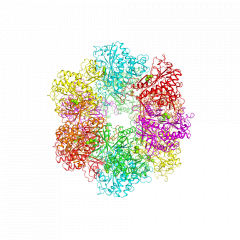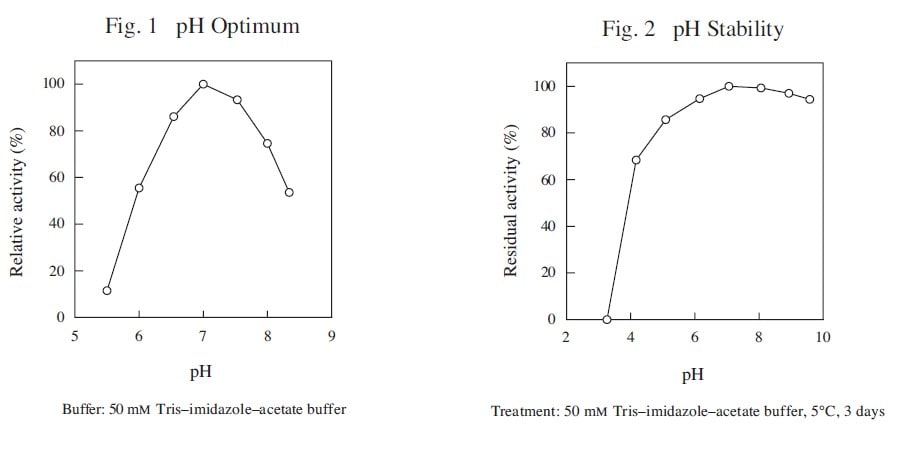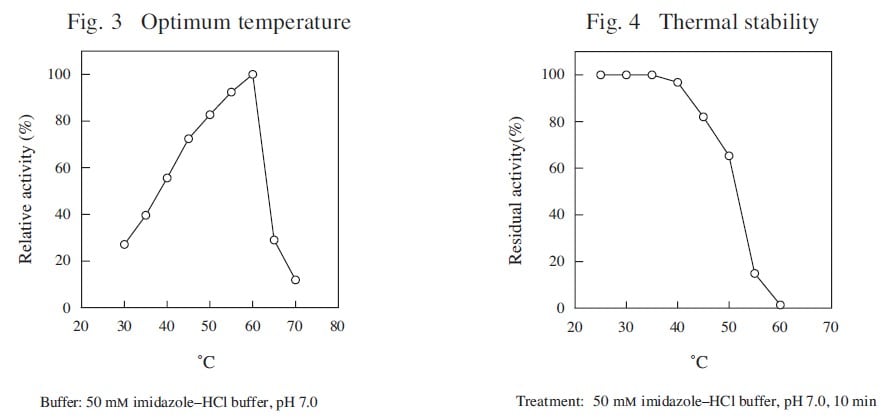
臨床検査において、アンモニアおよびATPの測定に利用されます。
| 由来 | microorganism |
|---|---|
| 系統名 | L-Glutamate : ammonia ligase (ADP-forming) |
| EC 番号 | 6.3.1.2 |
| 反応式 | ATP + L-Glutamate + NH3→→→ ADP + Orthophosphate + L-Glutamine |

臨床検査において、アンモニアおよびATPの測定に利用されます。
| 由来 | microorganism |
|---|---|
| 系統名 | L-Glutamate : ammonia ligase (ADP-forming) |
| EC 番号 | 6.3.1.2 |
| 反応式 | ATP + L-Glutamate + NH3→→→ ADP + Orthophosphate + L-Glutamine |
| Appearance | white to light yellow lyophilizate | |
|---|---|---|
| Activity | ≧15.0 U/mg | |
| Contaminants | Catalase ≦0.5 U/U% | |
| Stabilizer | sucrose | |
| Storage condition | below-20℃ |
| Molecular weight | ca. 900 kDa (gel filtration) |
|---|---|
| Structure | 57 kDa (SDS-PAGE) |
| Isoelectric point | 6.5 |
| Michaelis constant | 1.5×10-2M (L-glutamate) |
| 1.3×10-4M (ammonia) | |
| 8.7×10-4M (ATP) | |
| pH Optimum | ca. 7.0 |
| pH Stability | 6.5–9.5 |
| Optimum temperature | 60℃ |
| Thermal stability | below 40℃ |
| Inhibitors | methionine sulfoximine, carbamyl phosphate |
| Activators | Mg2+,Mn2+ |
| Specificity | L-glutamate (100), D-glutamate (0.8) |
| NH₃(100), NH₂OH (12) | |
| ATP (100), GTP (2.5) |
The enzyme is useful for the determination of ammonia and ATP in clinical analysis.

The appearance of phosphate is measured spectrophotometrically at 660 nm.
One unit (U) is defined as the amount of enzyme which produces 1 μmol of phosphate per min at 37℃ and pH 7.0 under the conditions described below.
Sample: dissolve the lyophilized enzyme to a volume activity of 0.08–0.18 U/ml in ice-cold 50 mm imidazole–HCl buffer, pH 7.0, immediately before measurement.
| 1.0 ml | Imidazole–HCl buffer | (Reagent A) |
|---|---|---|
| 2.5 ml | ATP solution | (Reagent B) |
| 2.0 ml | L-Glutamate solution | (Reagent C)) |
| 1.0 ml | NH4Cl solution | (Reagent D) |
| 0.6 ml | MgCl2 solution | (Reagent E) |
| 2.9 ml | Distilled water |
Activity can be calculated by using the following formula:

0.556 : Millimolar extinction coefficient of phosphate under the assay conditions (cm2/μmol)
df : Dilution factor
C : Content of glutamine synthetase preparation in sample (mg/ml)


Ebner, E. et al., “Methods in Enzymology,” Vol. 17A, Academic Press, New York, 1970, pp. 910–922.